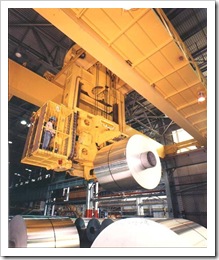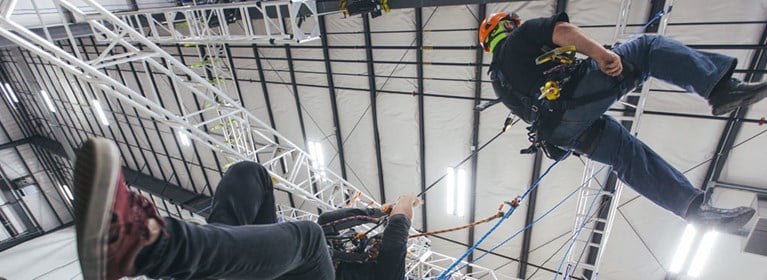How Do You Calculate the Stopping Distance of a Bridge Crane?
Crane Systems |
By Tom Reardon |
Sep 13, 2010
Abraham writes:

“How do you calculate the stopping distance of a bridge crane to see if you meet the OSHA standards? I need help determining if our bridge cranes are traveling too far after we release the travel button on the remote control.“
Tom answers:
Both OSHA 1910.179 and ASME B30 publish standards which address bridge and trolley brakes with regard to stopping distance. Below are some OSHA and ASME guidelines:
- OSHA 1910.179 (f)(4)(vii) Brakes for stopping the motion of the trolley or bridge shall be sufficient size to stop the trolley or bridge within a distance in feet equal to 10 % of full load speed in feet per minute when traveling at full speed with full load.
- ASME B30.2-1.12.3 (a)(1) brakes should have torque capability to stop trolley/bridge travel within a distance in feet equal to 10% of rated load speed when traveling with a rated load.
OSHA and ASME specify “rated load speed.” This speed is set by the crane manufacturer and can be found in the specifications section of the manuals supplied with the crane. If not specified, you may use one of the following procedures:
- One option is to determine 10% of the distance in feet. Put a full load on your crane and traverse the bridge or trolley at full speed for one minute. Mark the distance. Most trolleys will run out of room long before one minute passes. Take 10 percent (10%) of that distance. This would be the maximum “drift” distance allowed after putting the controls in the off or neutral position with the crane traveling at full speed with a full load. This approach is what many people try to do. It can be tedious.
- A better option might be to determine 10% of a minute. The standard states “10% of full load speed in feet per minute.“ 6 seconds is 10% of a minute. When traveling at full speed with a full load the bridge or trolley should stop within 6 seconds after going to the neutral or off position. With less than a rated load, the bridge or trolley will drift shorter distances/less than 6 seconds.
North America - EN






